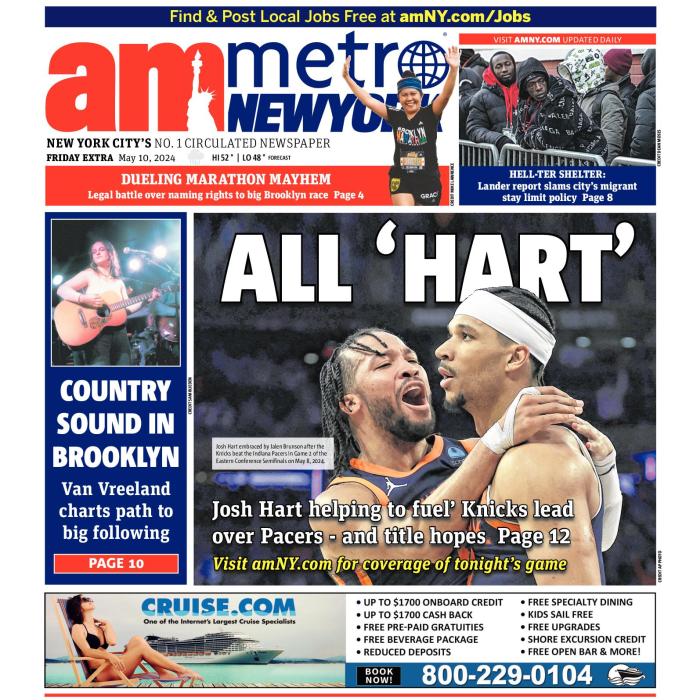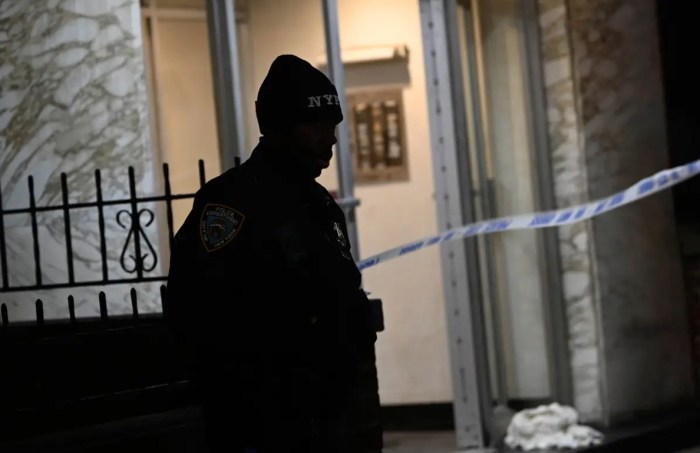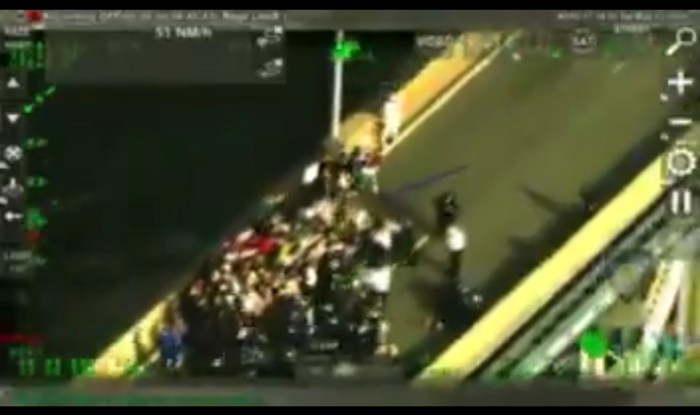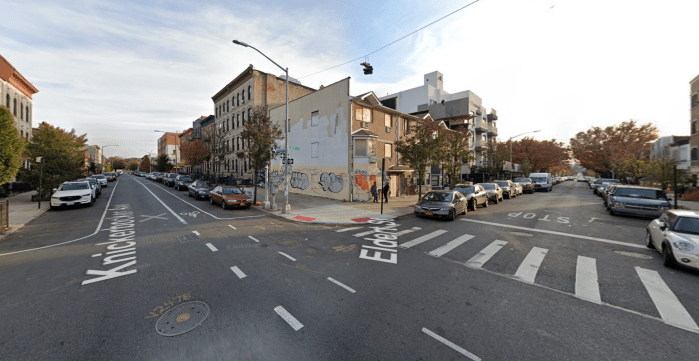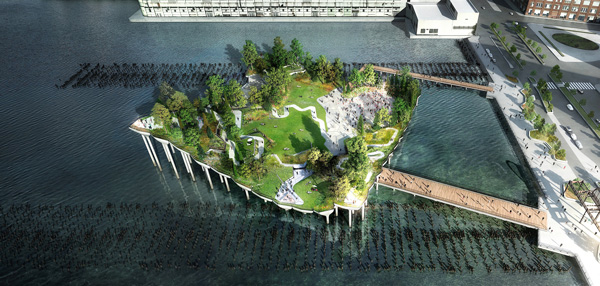
BY LINCOLN ANDERSON | Earlier this month, an Appellate Division judicial panel issued a stop-work order on construction of Barry Diller’s glitzy Pier55 project on the Village waterfront. It was a stunning blow, as the ruling came just one day before pounding of the first piles for the new “arts island” was about to start.
But this week, the judicial panel modified their order, allowing some of the piles — though just a small number, only nine — to be put in now, pending the panel’s hearing of the full appeal on Sept. 6.
Initially, plaintiffs backed by the City Club of New York who filed a lawsuit in June of last year were buoyed by the July 5 stop-work order.
In turn, with this week’s partial lifting of the injunction, Diller’s Pier55 group and the Hudson River Park Trust declared it’s only a matter of time until they are cleared to go full-steam ahead building the $130 million six-story-tall undulating pier, slated for the Hudson just south of W. 14th St.
The Trust, a state-city authority, is responsible for building and operating the 5-mile-long Hudson River Park.
The Trust had hoped to drive a total of 55 concrete piles within this in-water building season, which — under state and federal regulations — starts in the spring and ends Oct. 31. These 55 piles would specifically support the two footbridges out to the isle-like park pier. About 10 times that many piles, however, would be needed for the entire project.
The purpose of the nine piles that are currently being allowed to be driven is to hold up a “balcony” that will hang out over the river and connect the pier’s footbridges to the mainland part of the Hudson River Park.
According to a Trust source, the plan all along actually had been only to drive nine piles by Labor Day — so now the project is technically back on schedule. If those nine piles had not been allowed to be pounded in this summer, however, it would have delayed things significantly — pushing back the project’s completion date a full year.
Construction on Pier55, including an expanded plaza area on the mainland part of the park, began in late June.
“With the City Club’s latest charade behind us, we will get back to building the new public park that local residents have sought for years,” a Pier55 spokesperson said in a statement this week. “Now that both state and federal courts have denied its demand for an injunction, the City Club should take this cue to finally end its absurd crusade against the wishes of the community. We remain committed to making Pier55 a reality and providing new green space for all New Yorkers to enjoy.”
A Trust spokesperson added, “We’re pleased that the court has reversed its decision, allowing us to get back on track with our planned construction for the summer. The plaintiffs have yet to produce a single relevant credible expert, and we’re confident the courts will continue to rule in our favor.”
But Tom Fox, a longtime Hudson River Park advocate who is one of the City Club plaintiffs, said the Trust and Pier55 group are mischaracterizing the opposition, as well as the partial lifting of the stop-work order. Fox was chairperson of the Hudson River Park Conservancy, the Trust’s predecessor.
“It’s interesting that they are trying to pitch this as us against the community,” Fox told The Villager. “We’re fighting an unaccountable government agency breaking environmental laws and negotiating in secret with a billionaire.
“It’s not lifting an injunction against building Pier 55 — it’s allowing them to drive nine piles not the 547 piles that they want to drive to build Dilligan’s Island. We are in court in six weeks. If they lose, they have to pull them,” he said of the nine preliminary piles. “This is another risky act by the Trust and another potential waste of scarce resources.”
Cuomo disappointed at ruling
The day after the full stop-work order was issued earlier this month, Governor Andrew Cuomo personally weighed in on the side of Pier55, ratcheting up the pressure to allow the project to proceed.
“I am disappointed the Appellate Division has temporarily halted construction of the Hudson River Park Trust’s and Pier55, Inc.’s plan to transform an underutilized pier into an open space where New Yorkers would be able to enjoy recreation and entertainment,” Cuomo said in a July 6 statement. “Delaying this project does a disservice to the public, as well as damages the economic development that important public parks like this one encourages. I’m hopeful that when the appeals court hears the merits of the case, the Hudson River Park Trust and Pier 55, Inc. will be able to move forward with the construction of this important project.”
The project’s supporters also point out that the courts tend to slow down in the summer, which is likely why the appeal was put off till early September. In the meantime, the Appellate Division thought it best to issue the stop-work, until the full appeal is heard — though the panel subsequently O.K.’d the driving of only the nine piles.
The Pier55 plan has received all the required approvals by government agencies, including from the U.S. Army Corps of Engineers and the New York State Department of Environment Conservation, as well as the advisory approval of Community Board 2.
C.B. 2 on board with Pier55
Tobi Bergman, chairperson of C.B. 2, said the board is bullish on the Pier55 concept.
“We held two public hearings, each attended by over 100 people who overwhelmingly supported the project,” he said. “The proposal is for a beautiful and unique new park with great performance spaces that will be managed by an extraordinary team, providing unique opportunities for cultural enrichment and education for everyone including school children. Along with the Whitney Museum, it will be a transformative counterpoint to the philistine nightlife of the meatmarket area.
“There was some initial skepticism, as there often is to a major proposal,” Bergman acknowledged. “But people recognized this as a very serious project and a special enhancement to the community and to the river park. That’s why almost everyone who came to our hearings supported it and that’s why our board voted for it. A few people who have personal grudges against the park leadership and obviously lots of available cash to pay for a lawsuit, are doing great harm to our neighborhood and our park by delaying this project.”
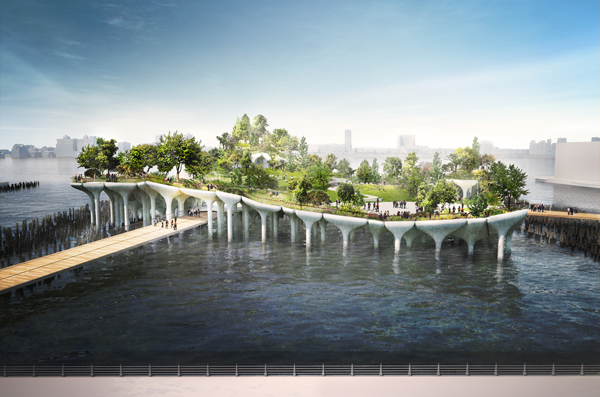
This past April, Joan Lobis, a Manhattan Supreme Court justice, dismissed the City Club’s lawsuit, throwing it out “with prejudice,” meaning that while the club could appeal to a higher court, the lawsuit could not be filed anew.
Appeals to the Appellate Division are automatic, as opposed to the state’s high court, the Court of Appeals, which can decide whether or not to hear an appeal.
Pier performances for thousands
The square-shaped Pier55 project, more an island than a pier, with two access ramps to the shore, would cover 2.7 undulating acres, supported on 547 concrete pilings. Its height above the river would vary from 8 feet to 62 feet. The pier would have three performance spaces, with a total audience capacity of at least 4,250.
Barry Diller, the media, Internet and travel titan, and his wife, Diane von Furstenberg, the famous fashion designer, have pledged to pay $113 million toward the project’s construction through their Diller-von Furstenberg Family Foundation.
Under a lease, a nonprofit, Pier55, Inc., or P55, to be chaired by Diller, would fund the new pier’s programming, operations and day-to-day maintenance for 20 years, with an option to extend this another 10 years, bringing Diller and von Furstenberg’s total commitment to hundreds of millions of dollars. They’ve also promised to pay for any project cost overages that may occur.
The Trust and the Diller-von Furstenberg Family Foundation have agreed that 51 percent of the performance events on the pier would be completely free and 49 percent could charge market-rate admission.
Impact on historic ships, small boats
Among the plaintiffs’ arguments is that Pier 54, which Pier55 would replace, has always been — from the early concept plans of the Hudson River Park — designated for the berthing of historic ships, but that Pier55 would not be slated for this. A major passenger-ship pier in its day, Pier 54 is rich in history. It was where the Carpathia brought the Titanic survivors and from where the Lusitania departed on her fateful journey that ended in her being torpedoed by a German U-boat. The Trust has already completely removed Pier 54’s concrete deck, however, leaving only its wooden pile field remaining, as the authority is bent on building Pier55 slightly to the north of the former Pier 54 footprint.
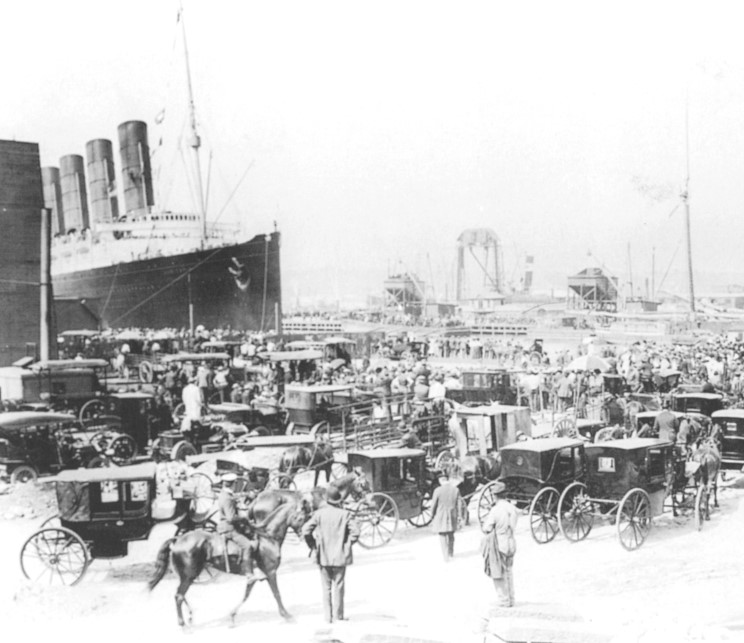
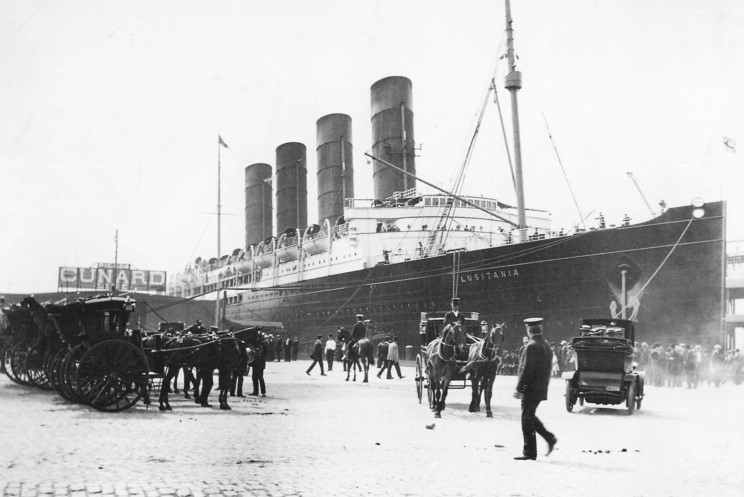
Another of the plaintiffs, Rob Buchanan, comes at the issue from another angle, charging that Pier55 would destroy an important “embayment,” or indented area, along the Hudson waterfront. Boaters in small crafts strategically use these nooks — like steps on a ladder, working there way up and down the river — to duck out of the river’s powerful current, its boat traffic and wind, and find calmer water, he explained.
Buchanan is part of the Village Community Boathouse, based at Pier 40, at W. Houston St., whose members build traditional New York-style Whitehall rowboats, then take them on excursions in the Hudson. The boathouse also does a lot of programs with high school students. Because Pier55 would stick out into the river so far — and since boaters wouldn’t be able to safely row or paddle underneath it, or through the remaining Pier 54 and 56 pile fields — an entire embayment area, between Gansevoort Peninsula and Pier 57, would be lost, he contends. Plus, the Hudson River Park includes far more water than it does land, he noted, and the enjoyment of that park water — at least for small boaters — would be seriously negatively impacted by Pier55, he said.
Trust: Arguments don’t hold water
But David Paget, the Trust’s environmental lawyer said, on the first point, there has not been interest expressed from owners of historic ships to berth in the park, beyond the old ships that are there now. The Trust has issued R.F.P.’s (requests for proposals) for historic ships, and gotten no takers, he said. But Fox countered that the Trust doesn’t make it economically feasible for operators of historic vessels to want to be in the park, since they are required to pay for their own electricity and water, among other things.
More to the point, the attorney said, the Hudson River Park Act was amended a few years ago to permit the Pier55 project, and the act’s amended language says nothing about historic boats at Pier55, assuming it gets built. Plus, the park is already home to a number of historic ships, he noted.
Paget added that there is also nothing in the park act mandating that the storied history of Pier 54 must somehow be preserved — although, he noted that the former pier shed’s iconic skeletal cast-iron entrance arch still does stand, and the Trust has pledged to retain it.
On the second point, Paget said, the Trust did surveys of kayakers and other boaters and found that none of them use the Pier 54 embayment. Buchanan said he found that statement incredible, and reiterated that his group definitely does use this spot.
‘The old lions’ still roaring
For his part, to those who try to dismiss the City Club as just a sort of shell organization with only a few members, Fox said its board and policy council include prominent veteran leaders of New York City civic life. In addition to himself, the club includes Kent Barwick, Brendan Sexton and Frank Sanchis, all past presidents of the Municipal Art Society; Ross Sandler, the city’s former Department of Transportation commissioner; and Al Butzel, the environmental lawyer who in 1985 defeated the Westway sunken highway megaproject along the West Side waterfront, which, in turn, led to the creation of the Hudson River Park and the renovation of the West Side Highway.
“We’re the old lions,” Fox said of the City Club.
